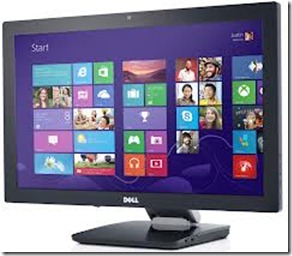COMMUNICATIONS HARDWARE TERMINALS AND INTERFACES
COMMUNICATION
Generally communication is the process of transmitting data from one person or one device to another.
The term data communication is used particularly for transmission of data between a user and a computer or between computers .
Telecommunications are data communications over large distances.
TERMINALS
A terminal is an input/output device that enables a user to communicate with a computer. Examples of terminals
1- A visual display unit .
2- A cash issuing terminal outside a bank .
3- A microcomputer running a program which makes it behave as a terminal.
REMOTE AND LOCAL
Remote-a terminal which is a considerable distance from the computer is referred to as remote. A remote terminal is connected to the computer by the telephone system or by some other data link.
Local– a device or system is local if it is not using any remote links. Examples of uses of the terms local and remote
1- A terminal is in local mode when it is not on-line to any computer but is being used off-line.
2- A terminal is said to be a local terminal if it is connected to a local area network (see below).
3- The owner of a home computer and a modem can use the computer as a remote terminal to book a holiday via Prestel (for modem for Prestel .
An intelligent terminal is a terminal which has its own processor and can run some programs without linking to a central computer. It is also known as a programmable terminal. (Microcomputers are often used as intelligent terminals.)
Teleprocessing is processing which is carried out using a remote terminal.
NETWORKS
In data communications a network is a system of computers and/or terminals connected together.
A work station is a terminal or a computer which an operator uses to interact with the network.
There are two main types of network:
1- A local area network (LAN) is a network in a small area, often one building. The work stations in a local area network are connected directly by cables .
2- A wide area network is a network operating over long distances. The work stations in a wide area network are connected by telephone or similar data links .
Examples of networks
Local area network-.a network of computers in a school. Wide area network-a viewdata network .
SERIAL AND PARALLEL TRANSMISSION
Parallel transmission of data means that the bits for each character are all sent at the same time.
If the transmission is by cable then there is a separate wire for each bit. With an eight-bit code there are eight wires for the data.
Serial transmission of data means that the bits for each character are sent one after the other.
If a cable is used data could be transmitted along one wire.
SPEED OF TRANSMISSION
The speed at which data is transmitted is measured in baud (named after a French engineer called Baudot ) .
For serial transmission 1 baud is 1 bit per second.
An alternative measurement is in characters per second (c.p.s.).
Example of baud and c.p.s.
Serial terminals usually transmit ten bits for each character.
Thus 300 baud = 30 c.p.s.
9600 baud=960 c.p.s.

